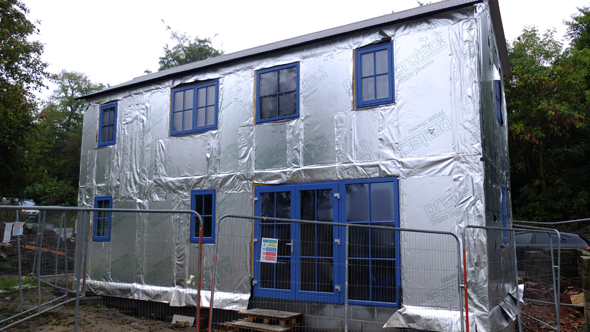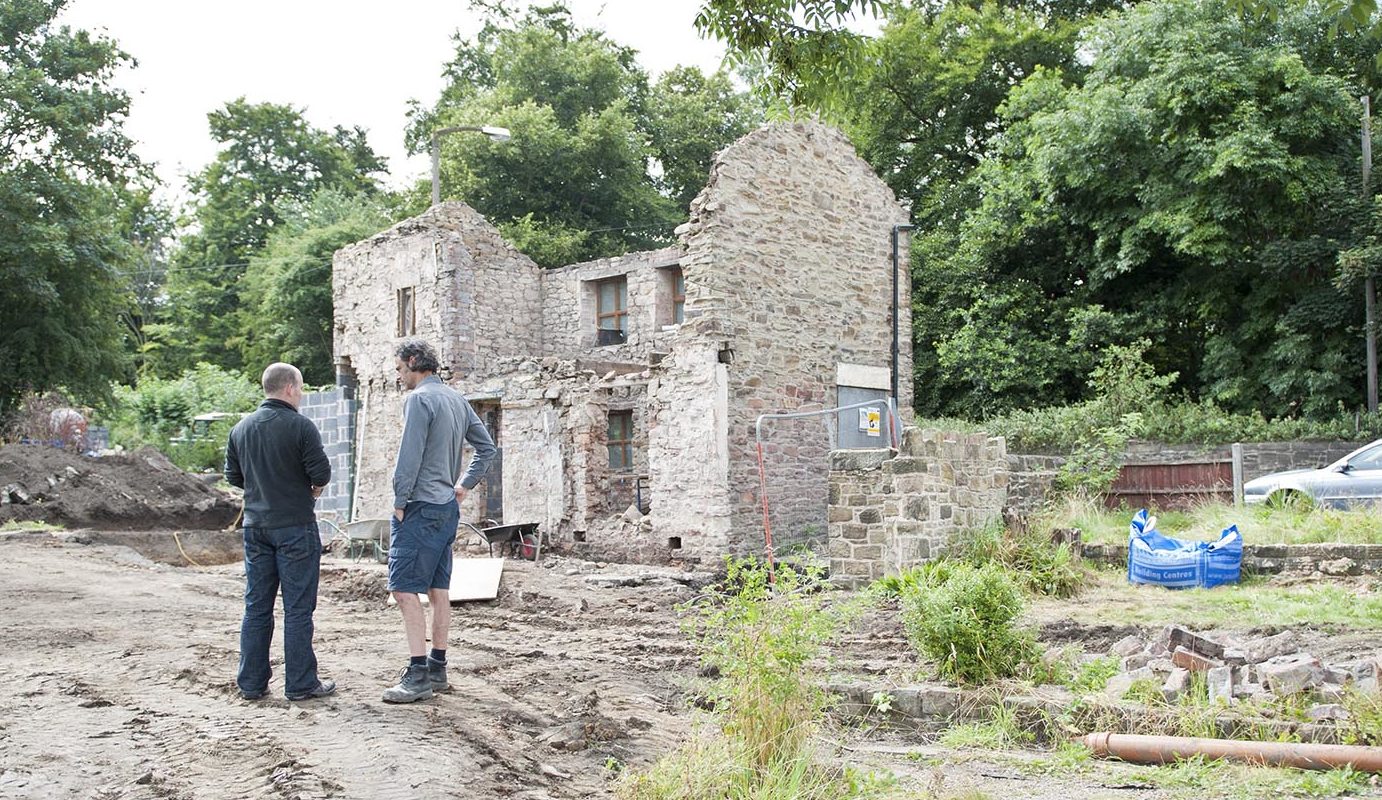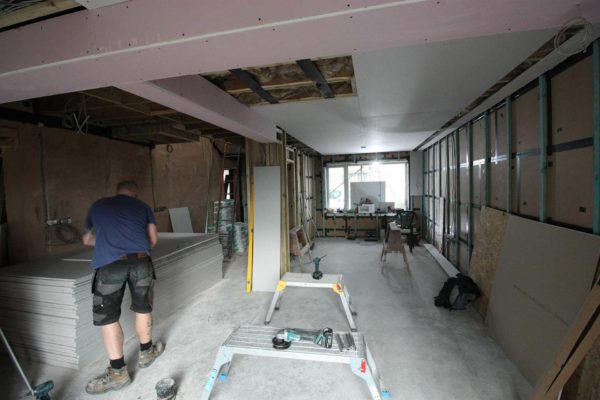For our Cinder bridge Road project, we’ve been looking at the possibility of installing a wood burning or mixed fuel stove.
Since we’re aiming for a decently air-tight thermal envelope I found the demands of approved document J required a significant compromise with regards ventilation for the stove. This is noted in Mark Brinkley’s blog from as long ago as 2010 and led me to ask the question on Twitter.
There definitely seems to be a lot of uncertainty as to what can or can’t be achieved without breaking the rules or significant vents through the building envelope. I was reminded of a blog post from the Brute Force Collaborative that discusses fires in Passivhaus projects and which hints, by the omission of log burning stoves, at the issues we were facing.
I was also pointed in the direction of Glyn Hughes from Hughes Design Ltd and Soliftec (the Solid Fuel Technology Institute). His email response made the situation (specifically regarding solid fuel stoves) very clear and is something I thought worth sharing:
Glyn goes on to say:
All fuel-using appliances need fresh air to burn, and solid fuel appliances need a lot of air. It would look as if it was a simple matter in a well-sealed house to just bring air to a closed stove via a duct from the outside, and you can buy several models of stove which have this feature. Unfortunately, it is not simple.
Glyn Hughes
If a house is ‘leaky’ air-wise or has direct ventilation openings, then the air pressure inside and outside the building will always be pretty near equal. A stove inside the building will provide heat into the chimney flue so that the gas molecules there are more active, hence they are fewer per unit volume and so the whole gas mass is less pulled-down by gravity – this is what causes the flue gases to rise (like an air bubble in water) and so pull in the fresh oxygenated air which is necessary for combustion and carry away the VERY poisonous waste gas.
But once you try to completely seal a building it becomes both possible and likely that there will be differences in inside and outside air pressure. Should the air pressure inside the building fall below that outside, (because of wind, forced ventilation systems, of just that chimney effect) then there is a high possibility of gases from inside the stove (which will not be by any means perfectly sealed) being forced into the room. This risk has been investigated in some detail by the Canadian Housing Corporation and the UK Building Research Establishment and shown to be both genuine and severe. CO concentration in SF waste gas is VERY high indeed – perhaps 100x that from methane appliances – and can give an LD50 dose in humans in less than 30 minutes.

There are two answers:
(A) CEN is currently proposing that for, sealed buildings, an outside air supply stove must (1) be demonstrably completely airtight (2) must have loading and de-ashing doors which close automatically (3) have demonstrated to a CEN notified laboratory an ability to remain airtight after 6,000 operations of opening and closing the door. There is no stove available which meets this.
(B) UK and Irish recommendations adjunct to the Building Regulations (Document ‘J’) are expected to soon incorporate a requirement that direct air supply for stoves incorporates a by-pass vent. In this, the outside air supply for a stove is trunked to a point near (but not directly connected to) the stove’s air inlet, or the air inlet duct has a deliberate gap to the room in it. In this system the ‘suction’ generated by the stove itself pulls air straight from outside into the stove, and doesn’t impinge in the room. If there is rise in outside pressure (say, wind), it just blows air into the room. If there is a drop in inside pressure (say a fan being turned on) it just sucks outside air into the building. Several stoves including those made by Dunsley, Esse and BFM now offer this type of air supply.
Having said all that, it is worth remembering that it doesn’t particularly matter what route outside cold air takes to get to the stove, its effect on energy loss is just the same.
If the air is delivered through a habitable room, it cools the room. If it is delivered directly to the stove, it cools the fuel. Either way, the same amount of additional fuel is needed to make-up the difference.
If, say, wood has a combustion air requirement of about 4.4 cu.m per kg, and a typical large stove takes 200% of stoichiometric air and uses 2kg per hour, then the air requirement is 17.6 cu.m per hour. But the specific heat of air is only equivalent to about 0.34W per cu.m per degree, so raising 17.6 cu.m by, say, 20deg, only uses 120W, equivalent to about 30g of fuel.
My professional advice is to fit an air vent, of the correct size, terminating right next to the stove. If the house is genuinely air-tight then no air will ever be drawn through the vent other than when the stove is lit and is generating draught, and then the incoming air will go straight into the stove. The problem, of course, is that the house WON’T be genuinely airtight, but that, I’m afraid, isn’t a problem I can solve here.”
Update August 2016 Stoves for use in Passivhaus and other air-tight buildings:
To achieve a safe installation in an air-tight building a properly room sealed and air-tight stove needs to be specified. This is not exactly a burgeoning market, but there are now some options:
- The Green Building Store’s latest blog on their Cumberworth retrofit looks at the options for specifying a properly air-sealed stove.
- The Rika Passivhaus stove is airtight and has been installed at the Acomb project in York. The Morso S11 stove also can be suitably airtight, but only after adaptations to the airflow control, and has been used on an EcoArc Passivhaus project in Cumbria.
- The Chesney’s Milan 4 Passive looks like it fits the bill, but Green Building Company’s experience doesn’t bear this out, unfortunately.
I would still question whether a stove is necessary (potentially overkill) or a sustainable source of heat (biomass – a burning issue), but there is something very satisfying about burning stuff which most of us can’t quite resist.
See some cosy home projects
Visit our Passivhaus projects page

